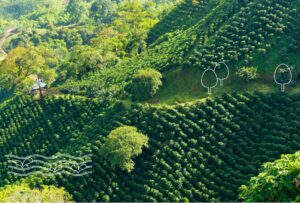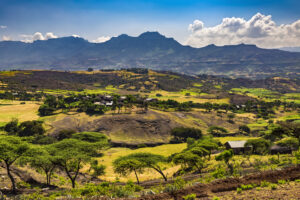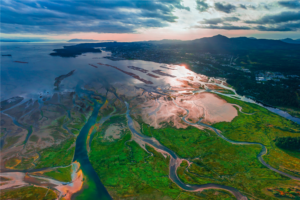Groundwater: How to better protect this hidden treasure?
Groundwater is an important part of the hydrological cycle. How so and why is it important to sustainably manage and protect it?
Malin Wennerholm: In Sweden, about 6 million people are dependent on groundwater for drinking water. Groundwater is also important for other areas such as urban infrastructure, since groundwater stabilizes the ground. If groundwater is over-extracted, it leads to lowered groundwater levels which in turn can lead to subsidence and damage to houses and roads.
In addition, groundwater is vital for certain ecosystems. Being part of the hydrological cycle, groundwater provides water to wetlands, springs, streams and lakes, and if groundwater levels change, groundwater-dependent ecosystems can be damaged.
Governments must acknowledge the importance of groundwater for nature and societies, and take measures to protect groundwater resources regarding both quality and quantity issues.
You recently worked with groundwater experts in Sweden. What was the project about?
MW: On World Water Day 2022, Swedish Water House launched a multi-stakeholder group on groundwater, which gathered groundwater experts from Swedish academia, NGOs, government agencies and the private sector. The aim of the group was to raise awareness and knowledge about groundwater, with a focus on self-sufficiency, resilience and sustainability in Sweden. It gathered the Swedish resource base in groundwater issues to enhance collective learning, investigate solutions in groundwater governance, and raise awareness and knowledge about groundwater.
We did this by organizing internal and external seminars and webinars on topics such as groundwater recharge, groundwater mapping and self-supply, as well as publishing a policy brief in 2022 which gives an overview on groundwater conditions in Sweden. In our final project we developed competence enhancing material (in Swedish) targeting municipal politicians and officers, which was presented during a well visited webinar in April this year.
“Governments must acknowledge the importance of groundwater for nature and societies, and take measures to protect groundwater resources regarding both quality and quantity issues.”
What is the overall situation with groundwater in Sweden and what are the challenges?
MW: In the policy brief from 2022 and the competence enhancing material from 2024, we present a number of challenges and recommendations for groundwater governance in Sweden.
Sweden has a wealth of groundwater aquifers, which are the main source of drinking water for half of Sweden’s population. A substantial part of this drinking water is self-supplied and unregulated. It is therefore important to acknowledge, map and protect groundwater resources. Even in Sweden we face challenges such as negative impacts from infrastructure (e.g. reduced capacity for groundwater recharge due to hard surfaces), overextraction of groundwater (especially a challenge in coastal areas of Sweden, for example due to more and more people settling permanently in what used to be vacation homes – which put higher pressure on already limited groundwater resources), and climate change, which impacts rainfall patterns and vegetation periods (e.g., longer vegetation periods lead to a shorter period for groundwater recharge).
What are some of the recommendations for improved groundwater governance you have reached within the group?
MW: Groundwater management in Sweden is fragmented across many actors with different roles and responsibilities. Groundwater for self-supply is not regulated and there is very limited data about this water. The policy brief from 2022 therefore suggests to investigate the need for an expert authority with explicit responsibility for groundwater management. The brief also raises the need to increase awareness and knowledge on groundwater – both among decision makers and the public.
For municipalities, we list a large number of recommendations, such as creating or renewing water protection areas around the municipality’s water sources in cooperation with the county administrative board; considering groundwater resources in urban planning; and ensuring sufficient data collection of groundwater regarding the municipalities’ water quality. We also present good examples from municipalities who have implemented successful efforts for groundwater.









